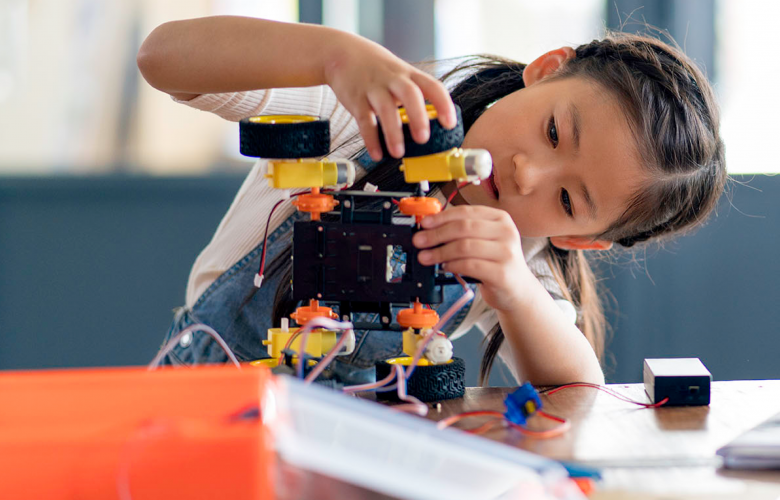
The world of work has drastically changed from when I was young. When I was seeking my first jobs, we were at the tail end of an industrial era. Today, we are in an information age. With the exception of service occupations, shift work and assembly lines have been replaced with working from home, the gig economy, computer terminals, and robots.
It’s easy to teach our students about the world we know, but how can we prepare them for a world of work that is being redefined daily? In the new guide K–8 STEM Career Competencies, published by EDC’s STEM Learning and Research Center (STELAR), my co-authors and I share easy and effective ways to help students explore and acquire the skills they will need to thrive in 21st-century workplaces.
We began writing the guide after we produced a related report on the future of work at the human-technology frontier. As we rolled out that report, our National Science Foundation program officers asked us, “What can happen now, in K–8, that will help students get ready for the human-technology frontier?”
To answer that question, we enlisted input from the Innovative Technology Experiences for Students and Teachers (ITEST) researchers we serve through STELAR. Together, we identified the following 10 competency areas that our research indicates will be needed for success in future work:
1. Artificial intelligence
2. Computational thinking
3. Digital and media literacy
4. Cybersecurity and digital citizenship
5. Data literacy
6. Dynamic interdisciplinary teaming
7. Design thinking
8. Systems thinking
9. STEM career development
10. Lifelong and flexible learning
In the guide, we define each of these competencies and describe why it is important for future work. For each grade level (K–2, 3–5, 5–7), we provide activities, resources, and readings to help teachers put the competencies into practice. We also spotlight ITEST projects nationwide that are supporting young students in building skills in each of the competencies.
You might ask, “Isn’t K–8 too early to start teaching technical skills?” In fact, K–8 is the perfect time. Career awareness begins early, as young students explore their communities and learn about the workers they see around them. K–8 students are also beginning to develop the foundational skills that will lead them onto career paths.
With this guide, we’re hoping to help educators ignite K–8 students’ interest in STEM and give them a head start in a world driven by technology.
What about you? Are you doing similar work? Or do you have questions about the guide? Please share your thoughts and questions below.
|
Joyce Malyn-Smith is an EDC Distinguished Scholar and national expert on STEM career development and workforce education. Her research focuses on the future of work and its implications for lifelong learning. |

Comments
Add new comment